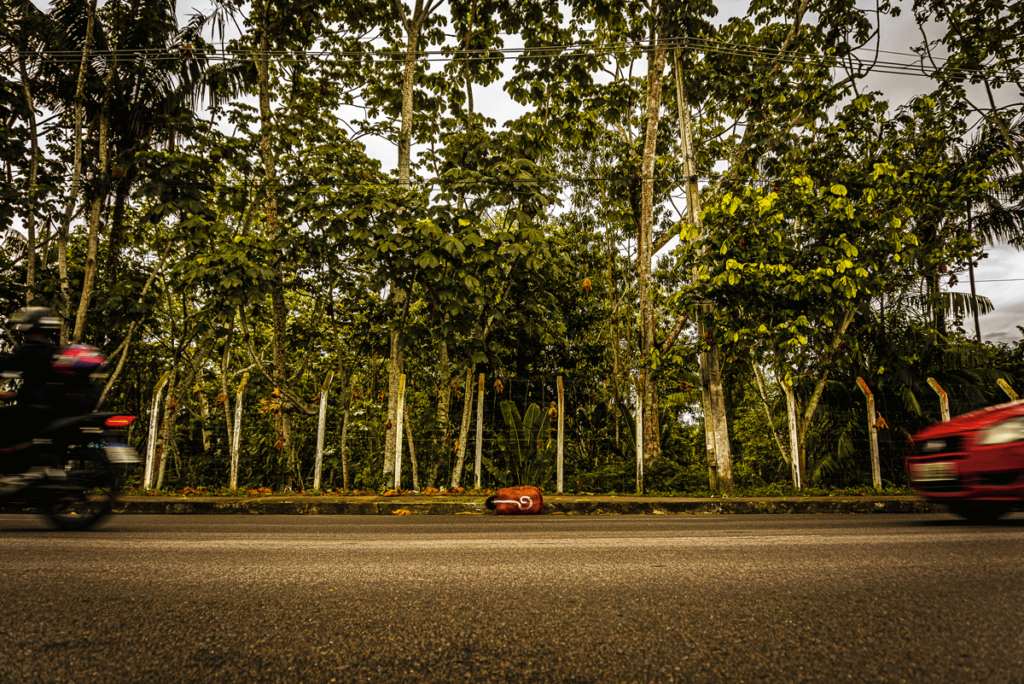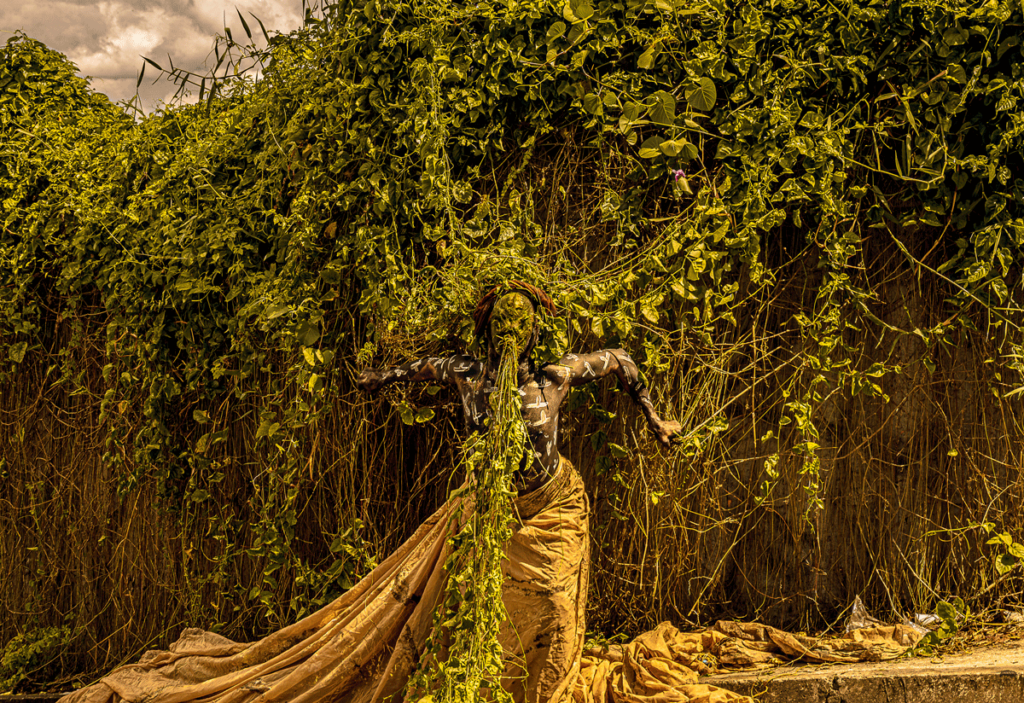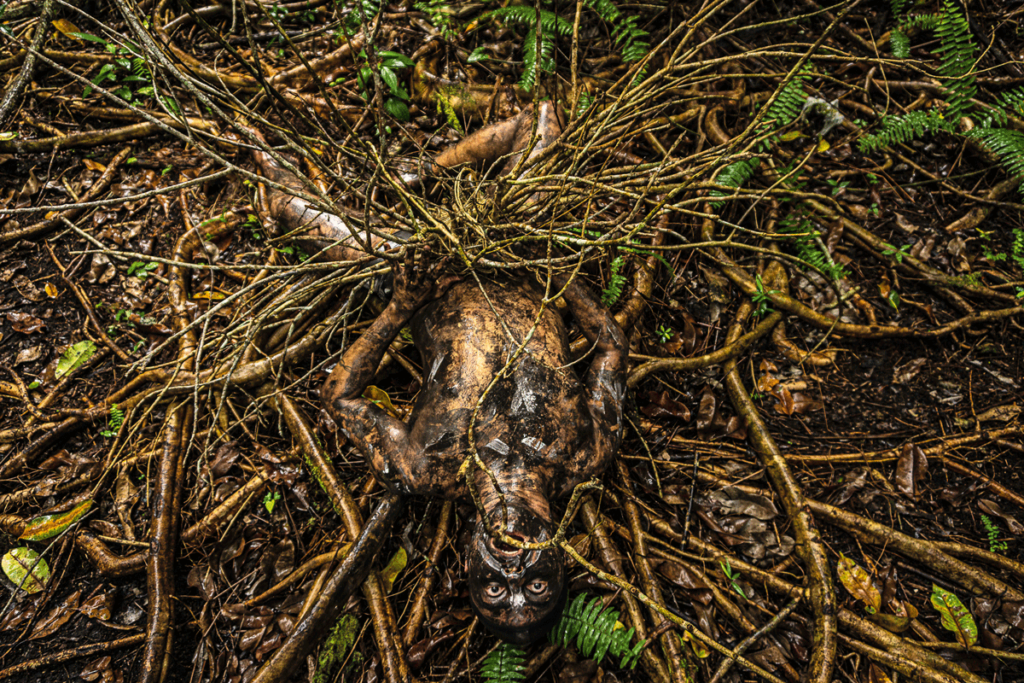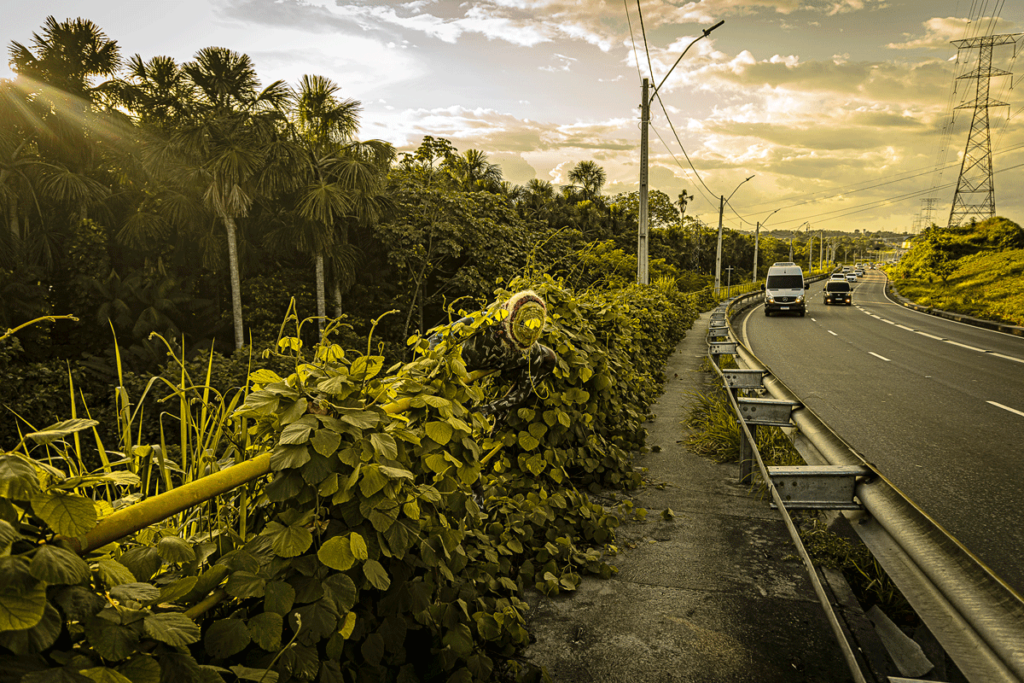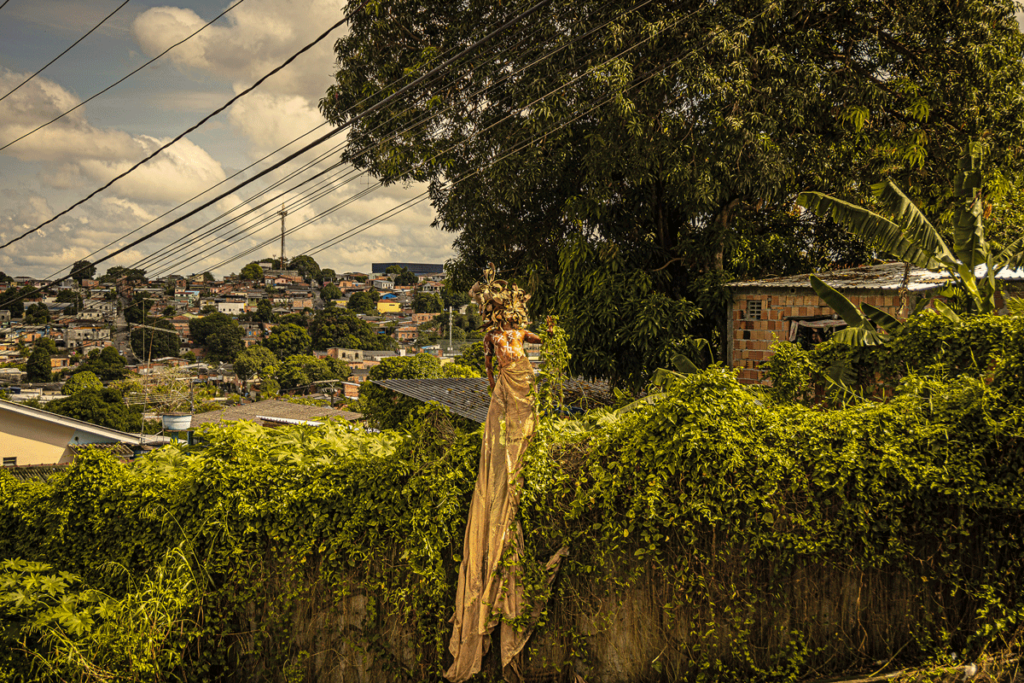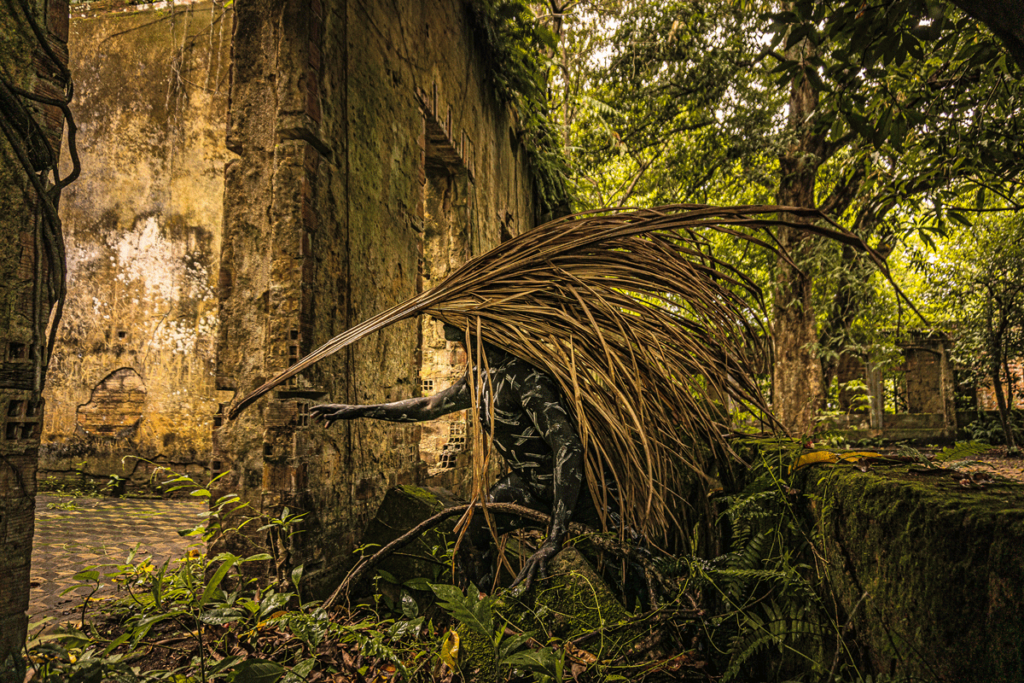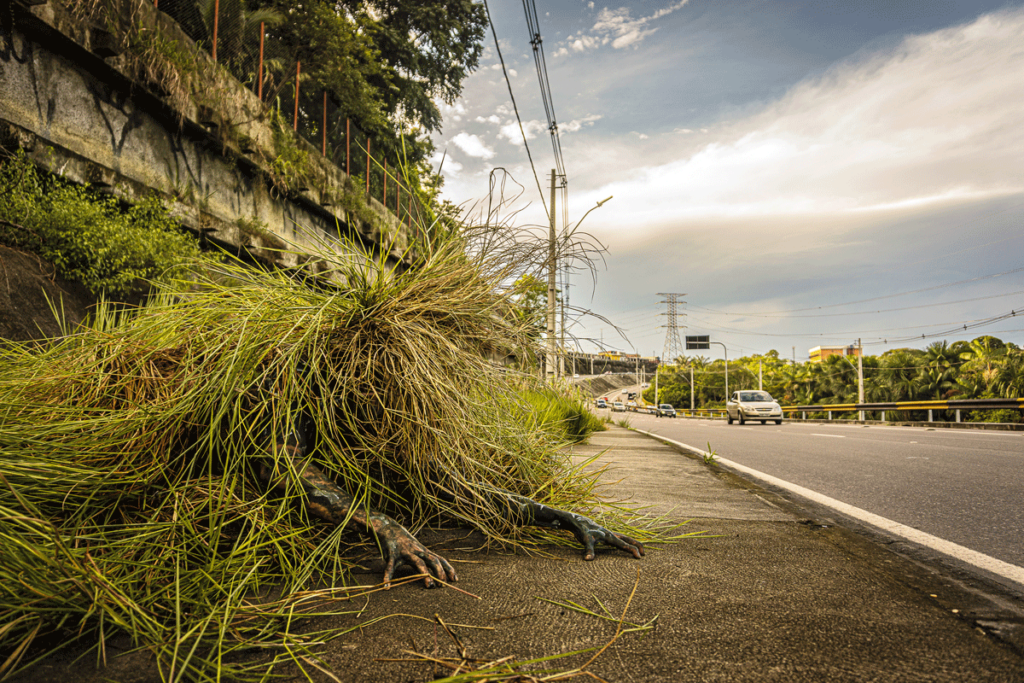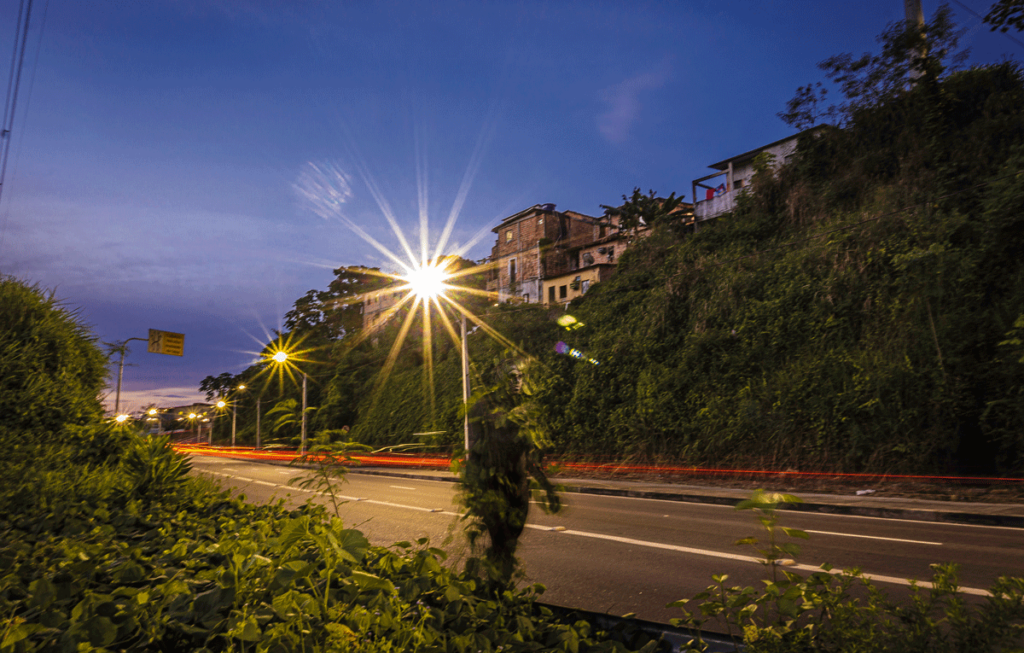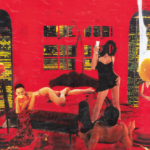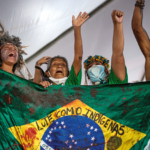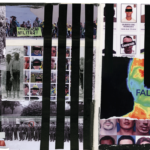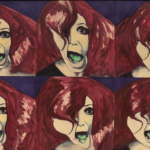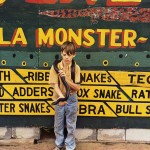Resumption
Publicado em: 7 de February de 2023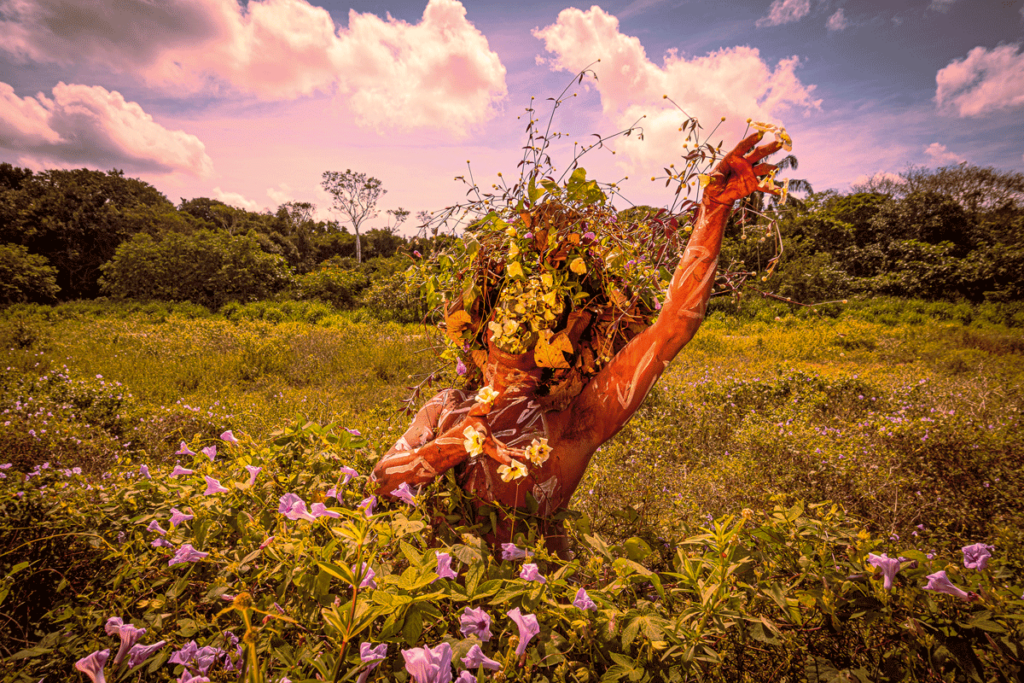
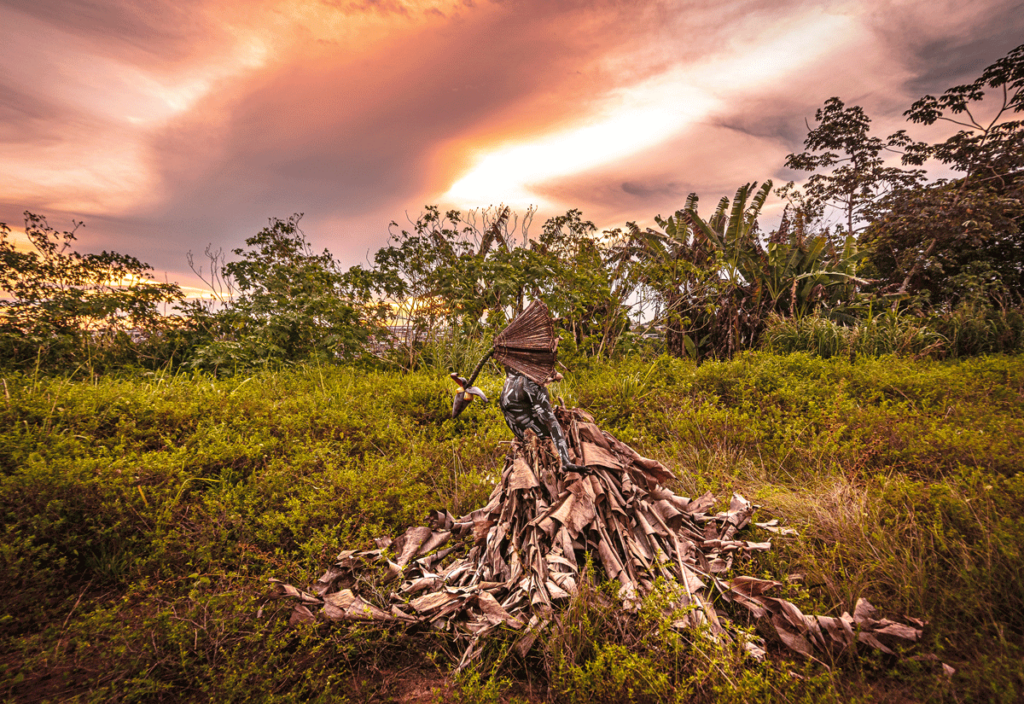
In recente years, as I have been traveling through the worlds of this planet, I have noticed something that has been important to me since I was a child: plants that grow spontaneously.
I grew up in two cities in the Amazon region: Santarém and Manaus. In these urbanized spaces, I have always lived alongside several plant species that, in general, are not useful to people and that’s why they are called “mato” [weeds or scrub] – a kind of life considered inconvenient, worthless, although most of the plants have medicinal or food value.
These plant species inhabit every area of the cities, many of them in unpredictable places. They cover and invade abandoned big houses and buildings, spread over sidewalks, weave through the power lines, transform walls into real green walls, rise from the chinks in the asphalt to the cracks in the houses. They definitely inhabit everything.
They are frontline plants, that is, they are the first to occupy any area that has been degraded or abandoned by humans. Their life cycle is intense, as their seeds are dispersed through the cities by the wind, water, birds and other animals. When the seeds reach the soil, they quickly germinate, rooting and reproducing, resulting in leaves, flowers and fruits, fertilizing and shading the area, assuring it is kept moist – ideal characteristics for other species to establish themselves. They open the way to a new forest.
In ecology, this process is called “ecological succession”. It is the return of the forest – of Life – as a form of rebellion against concrete and its oppressions. I like to think of the possible parallels between these plants and the indigenous peoples, as well as so many human groups made vulnerable by the colonial logic of the architecture, the imaginary and the functioning of cities.
Ecological succession is the set of ordered and gradual changes in the structure and composition of a biological community within an ecosystem (in this case, the urban one). It has three principles: it is a continuous and non seasonal process (it is independent of the seasons of the year); it is generated by the very organisms that live there, as a response to changes in the environment; and it ends up establishing a stable community – the climax community – that no longer undergoes major structural changes.
With its principles and ideals, ecological succession reminds us of the struggles for land and human rights, the resistance and re-existence of human groups condemned to the precariousness of the margins. When human machines destroy them, the plants start growing again. Ever since I completed my master’s degree in Amazon Ecology in 2016, I have been asking myself: “Where are the climax communities?”. They are certainly not in the cities.
It is in this context that the photographic series Retomada [Resumption] (2021) was born – the story of the eternal return of Life.
Each image represents the movement of plants in their contact with the city: meeting again, germinating, rooting, growing, aggregating, breaking free, spreading, blooming, bearing fruit, and everything all over again. In the images, Uýra appears camouflaged as the plants represented in the research, a gathering of local inhabitants. His body channels every movement and also serves as the canvas for drawings created for the series.
In addition to the presence of the species, the locations of the photos have in common their historical, environmental and sociocultural relevance to the original land. For example, Romper [breakout] was produced in the ruins of a colonial prison venture in Paricatuba, in the town of Iranduba, Amazonas. Built in 1898 at the height of the Rubber Cycle with materials imported from Europe, the Belizário Pena building was originally an Italian boarding house inside an indigenous area – one of the many national population-whitening projects. Years later, it became an Arts and Crafts School, then a jail and, from 1924, its greatest tragedy: a hospital for people with leprosy, a place where the state isolated the sick and from where hundreds of people disappeared.
Today, green-life covers the ruins. Hundreds of species of climbing plants, vines, mosses and shrubs live in harmony with many species of animals and trees, which can reach a height of thirty meters. Inside, the walls are taken by roots, proving that however strong it is, no cement is stronger than the time and roots of a plant. ///
Photographs: Matheus Belém. Production: Ythana Aflitos and Mafel Matagal.
Captions: Meeting again, Germinating- sprouting, Rooting, Going up-climbing, Aggregating, Breaking-drilling, Spreading-covering, Blooming and Bearing.
Originally published in ZUM Magazine #23, October 2022
Tags: amazônia, arte indígena, Povos originários, revista ZUM

